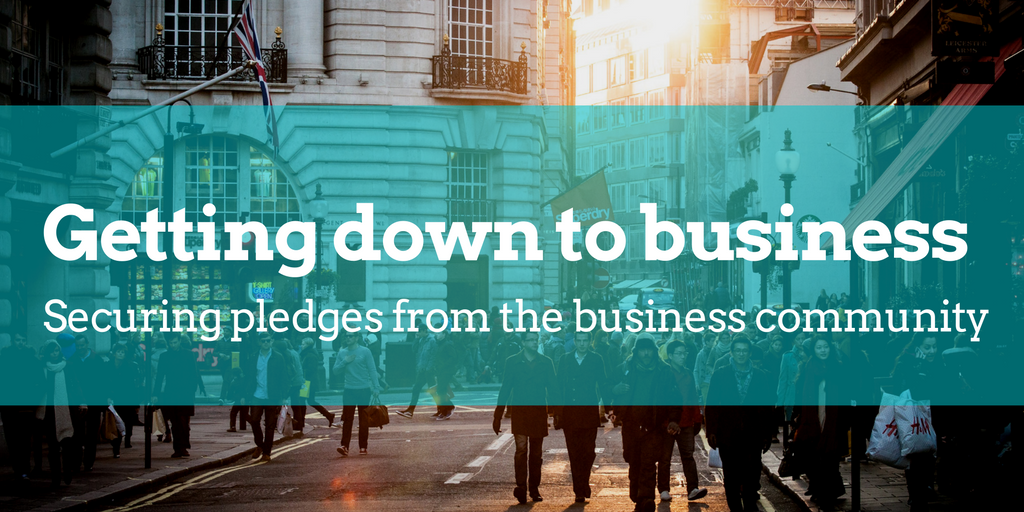If your project attracts people to the area and adds value to the neighbourhood, then it’s worth approaching local businesses and asking them to add their support whether through pledges, promotion or stuff.
Local estate agents, Keatons, who backed the Wanstead Playground project, said “there were many reasons we chose to back their project; we were helping provide a fun play area for local children whilst also increasing the value of the neighbourhood where we sell and let property. We pledged some funds but we also provided some signs to help spread the word of their campaign.”
Little Bird Gin backed the Peckham Coal Line project because they’ve “lived in and worked in Peckham for over a decade and are always delighted to do [our] bit to help the neighbourhood and build the community.”
Other businesses that have contributed creatively to local projects include the GLL who supported the opening of a Community Garden with staff who organised face painting for the kids, the Brick Brewery who created a special beer called the Peckham Coal Line Porter and donated the proceeds to the campaign as well as the Chelsea Football Club Foundation who donated a Chelsea Training kit to the Kensington Borough Football Club’s raffle to raise money for their project.
There are three tricks to getting businesses to pledge:
1. Warm them up right from the start
Although you should wait until later in your campaign to ask for a pledge, we advise ‘warming up’ your target businesses early on. Pop in and let them know that you live locally and would appreciate their opinion on a local project idea you have.
By asking for their feedback and taking their opinions into consideration they will feel like they’re a part of the project, and therefore may be more inclined to pledge to the project later on when you come back with a partially funded campaign. Sneaky but effective!
2. Approach when the time is right
Businesses are interested in backing projects that are popular in in the community, good causes that they can put their company’s name to. Wait until your campaign has attracted a significant number of backers (30+) or is 40-50% funded before asking for a pledge.
3. Come armed with an information pack and clear rewards
Create a clear summary of your project including its costs, milestones and impact on the area and outline how their pledge could help. Businesses will want to see their support acknowledged so outline clearly the marketing and PR benefits they’ll get in exchange for their involvement.
The info pack should include the following:
- Project summary (in four sentences!)
- Photo of what the project is now (before shot)
- Photo of what the project will look like when finished (after shot)
- Quote from another business/big backer (like the ones at the start of this section)
- List of rewards (e.g. big public thank you or a tweet of appreciation, their name on your website or on a plaque, including them in a local press article etc.)
- Campaign deadline (e.g. Only 10 days left!)
- Clear next step (“Contact me!”)
- Direct message (“We need your pledge”)
If a business is reluctant to pledge cash then suggest creative ways they can get involved – whether it’s having posters and leaflets on their premises, having a bucket for donations, sending out a message of support on social media or hosting a fundraising event in their building.
And once you have local businesses involved, your next step is to turn to the larger corporates (with the larger budgets) and ask them to get involved! Learn all the secrets to crowdfunding success with our complete guide to crowdfunding here.

